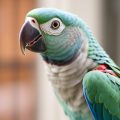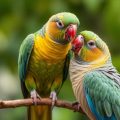Содержание
- Why parrots are especially vulnerable
- Common toxic foods for parrots
- Chocolate
- Avocado
- Caffeine (coffee, tea, energy drinks)
- Alcohol
- Onions and garlic
- Xylitol (artificial sweetener)
- Fruit pits and seed stones (apple seeds, cherry pits, peach pits)
- Salt and high‑sodium foods
- Moldy or spoiled food
- Dairy and high‑fat human foods
- Nuts in the shell and certain seeds
- Herbs and spices
- Quick reference table: toxic foods, why they’re dangerous, and signs to watch
- Household dangers beyond food
- Safe alternatives and protective habits
- Emergency steps: if you suspect poisoning
- Common myths and misconceptions
- Diet planning: what to feed instead
- Preventive home audit: a checklist
- Training and enrichment to reduce risk
- When to consult your avian vet
- Case stories and lessons learned
- Resources and further reading
- Final practical checklist for new parrot owners
- Conclusion
SQLITE NOT INSTALLED
Parrots are bright, curious, and endlessly entertaining members of the family, but their curiosity can lead them into trouble quickly. Whether you’re a new parrot parent or you’ve been living with feathered friends for years, it helps to be reminded that many everyday foods and household items are dangerous — or even deadly — to birds. This article walks you through the most common toxic foods and household dangers for parrots, why parrots are particularly vulnerable, symptoms to watch for, and practical steps you can take to keep your bird safe. I’ll also include easy-to-use lists and a clear table for quick reference, so you can spot risks at a glance and react confidently in an emergency.
Why parrots are especially vulnerable
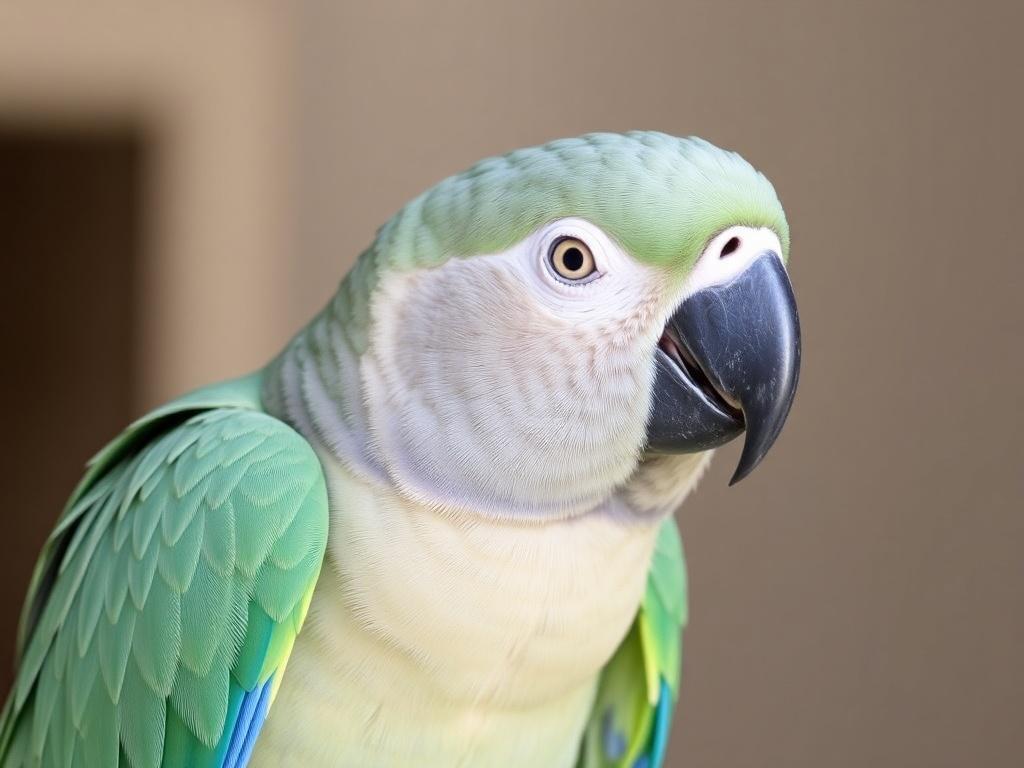
Parrots have unique physiology and behavior that make them more sensitive to certain toxins than humans or other pets. First, their respiratory system is highly efficient. That means airborne toxins, fumes, and tiny particles can affect them more strongly and quickly than they would affect a person or even a dog. Second, parrots have a very fast metabolism and a small body mass, so a small dose of a toxin can quickly reach dangerous concentrations in their bloodstream. Third, their beaks and feet allow them to investigate, chew, and nibble at almost anything within reach — including items that contain hidden hazards like lead or zinc. Finally, parrots evolved to eat a diverse diet in the wild, but they didn’t evolve to handle processed human foods, artificial sweeteners, or modern household chemicals. All of this adds up to the need for extra vigilance.
Common toxic foods for parrots
I’ll list the foods most frequently involved in poisonings and explain why they’re dangerous. Learning these can save your bird’s life — and they’re easy to avoid once you know what to watch for.
Chocolate
Chocolate contains theobromine and caffeine, both of which are stimulants that parrots cannot metabolize well. Even small amounts can cause hyperactivity, tremors, seizures, elevated heart rate, and potentially death. Dark chocolate and baking chocolate are especially dangerous because they contain much higher concentrations of these compounds.
Avocado
Avocado contains a compound called persin, which is harmless to humans in typical amounts but can be toxic to many birds. Signs of avocado poisoning include difficulty breathing, fluid accumulation around the heart or lungs, weakness, and sudden death. Both the flesh and the pit and skin of an avocado may be harmful.
Caffeine (coffee, tea, energy drinks)
Caffeine stimulates the central nervous system and heart. In parrots, it can cause restlessness, rapid breathing, heart rhythm problems, and seizures. Even sips of coffee or tea should be kept well out of reach.
Alcohol
Alcohol depresses the nervous system and can cause disorientation, vomiting, and respiratory failure in birds. Because of their small size, a tiny amount can be significant.
Onions and garlic
Onions and garlic (especially raw) can cause hemolytic anemia in many animals, including parrots. This means red blood cells are damaged, leading to weakness, lethargy, and pale mucous membranes. Both fresh and powdered forms should be avoided.
Xylitol (artificial sweetener)
Xylitol is found in sugar-free gum, some peanut butters, candies, and baked goods. In dogs it causes severe hypoglycemia and liver failure, and while reports in birds are less common, it is still a suspected danger due to rapid drops in blood sugar and possible liver damage.
Fruit pits and seed stones (apple seeds, cherry pits, peach pits)
Many fruit pits contain cyanogenic glycosides which can release cyanide when crushed or chewed. Apple seeds, cherry pits, and peach pits can be dangerous if a bird chews into them. It’s safer to remove cores and pits before offering fruit.
Salt and high‑sodium foods
Parrots are sensitive to salt. Excessive salt intake can lead to dehydration, kidney problems, and seizures. Processed human snacks, salted nuts, and chips are poor choices for birds.
Moldy or spoiled food
Molds can produce mycotoxins that are harmful to birds. Because parrots tend to explore everything with their beaks, they may nibble on old bread or leftovers. Avoid offering anything that is moldy or has been left out at room temperature for long.
Dairy and high‑fat human foods
Most parrots are lactose intolerant; dairy products can cause digestive upset. High-fat human foods and fatty scraps can lead to obesity and liver disease. Stick to bird-appropriate offerings and small amounts of plain, cooked lean meats when appropriate.
Nuts in the shell and certain seeds
Some nuts are safe and nutritious, but shells may contain contaminants or be sharp and pose a choking risk. Also, commercial peanuts sometimes carry aflatoxin (a dangerous mold). Offer shelled, properly stored nuts from reputable sources.
Herbs and spices
While many herbs like parsley or cilantro are safe in small amounts, spices like nutmeg or large amounts of paprika can be irritating. Avoid heavily seasoned or salty foods entirely.
Quick reference table: toxic foods, why they’re dangerous, and signs to watch
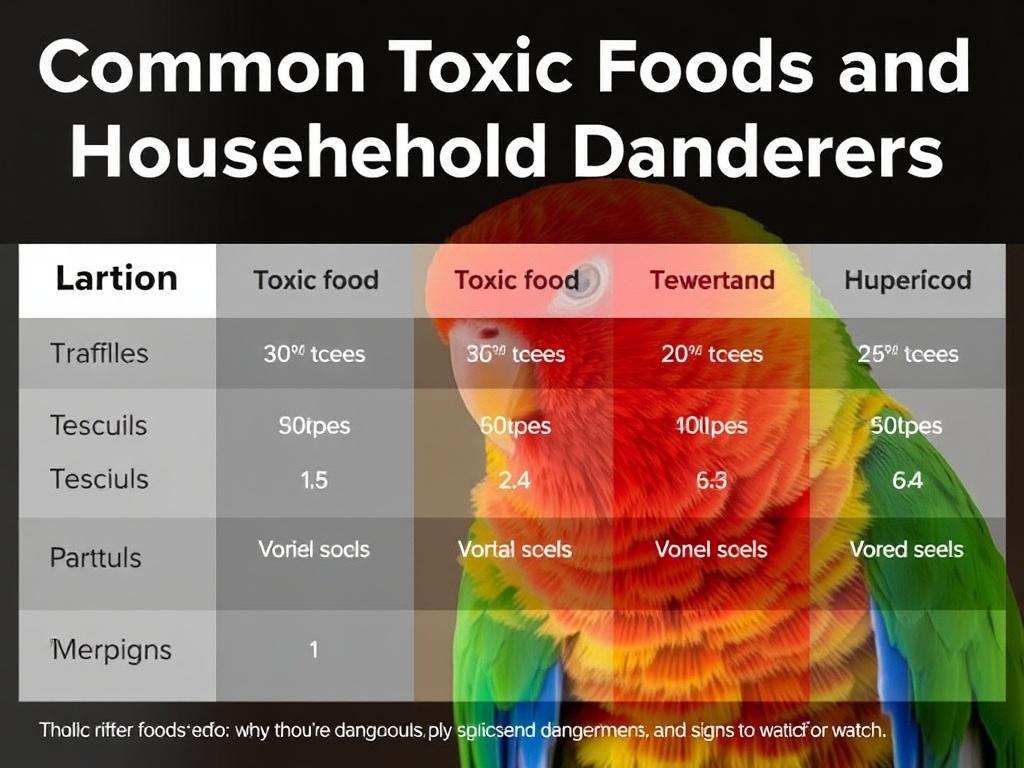
| Food or Item | Why It’s Dangerous | Common Symptoms | Immediate Action |
|---|---|---|---|
| Chocolate | Theobromine and caffeine toxicity | Hyperactivity, tremors, seizures, vomiting | Remove access, contact avian vet immediately |
| Avocado | Persin causes cardiac/respiratory distress | Breathing difficulty, weakness, sudden collapse | Seek emergency vet care |
| Caffeine | Stimulant effects on heart and nerves | Hyperactivity, rapid breathing, tremors | Stop exposure, contact vet |
| Alcohol | Central nervous system depression | Ataxia, breathing problems, vomiting | Emergency vet |
| Onion and garlic | Can cause hemolytic anemia | Weakness, lethargy, pale gums | Veterinary assessment, bloodwork |
| Xylitol | Rapid hypoglycemia, possible liver damage | Weakness, collapse, seizures | Immediate vet care |
| Fruit pits (apple seeds, cherry pits) | Potential cyanide release if chewed | Breathing issues, weakness | Remove and monitor, vet if symptoms |
| Moldy/spoiled food | Mycotoxins and bacterial toxins | Vomiting, diarrhea, lethargy | Stop feeding, consult vet |
| Salt-heavy foods | Dehydration, kidney stress, seizures | Excessive thirst, tremors | Fluid therapy at vet may be needed |
Household dangers beyond food
Toxicity isn’t just about what your bird eats. Air quality, metals, small parts, and everyday products can present serious hazards. Parrots explore with beaks and feet, so if something looks interesting, they will try to taste or manipulate it. Read through these common household dangers and how to prevent them.
Teflon and non-stick cookware fumes
One of the most notorious dangers to birds is fumes from overheated non-stick cookware (Teflon and other PTFE coatings). When heated to high temperatures, these coatings release fumes that can cause acute respiratory distress and sudden death in birds. It can happen so fast that birds in adjacent rooms may be affected. Avoid using non-stick pans or ensure excellent ventilation and never leave them unattended on high heat.
Lead and zinc
Many household items contain lead or zinc — leaded paint in older homes, curtain weights, fishing sinkers, costume jewelry, and some metal cage hardware. Parrots may chew and ingest these metals, causing chronic poisoning. Symptoms include lethargy, appetite loss, seizures, and digestive issues. If you suspect metal poisoning, seek veterinary care and bring any suspicious objects for testing.
Household cleaners and disinfectants
Common cleaning products, bleach, oven cleaners, and aerosols can be extremely harmful if inhaled or ingested. Always use bird-safe cleaning products, and keep your parrot away from rooms while you’re using stronger chemicals. Avoid spraying aerosols or using strong-smelling deodorizers near your bird.
Pesticides and insecticides
Cockroach sprays, fly baits, rodenticides, and garden pesticides can be deadly when inhaled or when residue is brought into the house. If you must use pesticides, remove your bird from the home for several days and thoroughly ventilate. Better yet, use bird-safe pest control methods.
Air fresheners, candles, and essential oils
Scented products may seem harmless, but many contain volatile organic compounds (VOCs) that can harm a bird’s respiratory system. Essential oil diffusers in particular can be problematic; oils like tea tree, eucalyptus, and citrus can cause respiratory irritation or worse. Keep these products completely away from bird areas.
Open windows, fans, and ceiling fans
Parrots love to fly or hop onto new perches, and an open window with no screen or a rapidly rotating ceiling fan can be lethal. Even if a window has a screen, birds can slip through if startled. Always secure window screens and keep ceiling fans off when your bird is out of its cage.
Other pets and small objects
Dogs and cats can accidentally injure birds. Playful dogs may bowl into a low cage or leap at a bird, and cats are natural predators. Small objects, strings, rubber bands, paperclips, and jewelry can be swallowed and cause digestive obstructions. Keep your bird’s environment free of tempting small items and supervised when near other pets.
Furniture, paints, and varnishes
Newly varnished furniture, freshly painted rooms, or varnished floors can off-gas solvents that are harmful to birds. Fumes can linger for days. When renovating, remove birds from the area entirely until fumes are completely gone.
Safe alternatives and protective habits
It’s easy to feel overwhelmed, but with a few consistent habits you can drastically reduce risk. Below are practical strategies and safe alternatives you can implement immediately.
- Designate bird-safe food: Offer fresh vegetables, bird-safe fruits (without pits), cooked whole grains, legumes, and formulated pellets recommended by your avian vet.
- Keep all human food out of reach: Never let your bird eat from your plate and don’t offer bites of your food unless you are certain it is safe.
- Use bird-safe cookware: If you must use non-stick cookware, use it with extreme caution — better: switch to stainless steel, cast iron, or glass.
- Choose safer cleaning supplies: Use unscented, non-aerosol cleaners and rinse surfaces well. Keep birds in another room until fumes have dissipated.
- Store hazardous items securely: Keep pesticides, medications, batteries, and household chemicals in locked cabinets.
- Check metal items: Replace or cover metal cage parts that contain lead or zinc; use stainless steel or nickel-plated hardware made for birds.
- Supervise out-of-cage time: Always watch your bird when it’s out and ensure doors and windows are secure.
- Be cautious with plants: Many common houseplants are toxic to birds — keep a list of bird-safe plants and remove dangerous species.
Emergency steps: if you suspect poisoning
Knowing what to do immediately can save time and improve outcomes. If you suspect your bird has eaten something toxic or been exposed to dangerous fumes, stay calm and act quickly.
Immediate actions
- Remove the bird from the source of exposure and get it into fresh air immediately (but avoid moving it around unnecessarily if you suspect a broken limb or severe distress).
- If the bird has ingested something, try to identify what and bring any packaging or remnants to the vet. Do not induce vomiting unless instructed by a veterinarian — some substances make vomiting more dangerous.
- Keep the bird warm, quiet, and in a stress-free environment while you arrange transport. Covering the cage lightly can reduce stress.
- Contact an avian veterinarian or an emergency pet poison hotline. Have the bird’s weight, species, and the substance (if known) ready to give them accurate information.
What the vet will likely do
An avian vet will assess the bird’s vital signs, possibly run blood tests, and may provide supportive care such as oxygen, fluids, activated charcoal, or specific antidotes if available. Quick, accurate information about what the bird ate and how much can make treatment faster and more effective.
Common myths and misconceptions
It’s easy to pick up misinformation, especially online. Here are some myths I hear frequently.
“All seeds are bad for parrots.”
Not true. Some seed mixes are high in fat and low in nutrition, but seeds are natural food for many parrot species. The key is a balanced diet: high-quality pellets, fresh produce, and seeds or nuts as supplements, not the main diet.
“If a food is safe for dogs, it’s safe for birds.”
Definitely not. Dogs and birds metabolize substances differently. For example, xylitol is notoriously dangerous for dogs but could also be dangerous for birds — don’t assume cross-species safety.
“If the bird seems fine later, I don’t need to see a vet.”
Delayed symptoms are common. Some toxins cause internal damage that won’t show immediately. Always consult a vet if you suspect exposure to a toxin, even if the bird acts normal at first.
Diet planning: what to feed instead
A balanced diet is the single best defense against accidental poisoning. Here are practical feeding guidelines.
Pellets as a foundation
High-quality formulated pellets, chosen to match your bird’s species and life stage, should make up a significant portion of daily calories. They’re designed to deliver balanced nutrition.
Fresh vegetables and fruits
Leafy greens, carrots, bell peppers, broccoli, sweet potatoes, and many fruits (without pits) are excellent. Rotate variety to prevent boredom and provide a spectrum of nutrients. Wash produce thoroughly and avoid canned fruits packed in syrup.
Cooked grains and legumes
Brown rice, quinoa, lentils, and beans (well-cooked) are healthy carbohydrate and protein sources. Avoid raw or undercooked beans like kidney beans which can be toxic.
Nuts and seeds in moderation
Offer shelled, high-quality nuts as treats — not as a staple. Walnuts, almonds, and hazelnuts are nutritious but high in fat.
Occasional lean proteins
Small amounts of cooked eggs or lean poultry can be offered occasionally to species that benefit from added protein.
Preventive home audit: a checklist
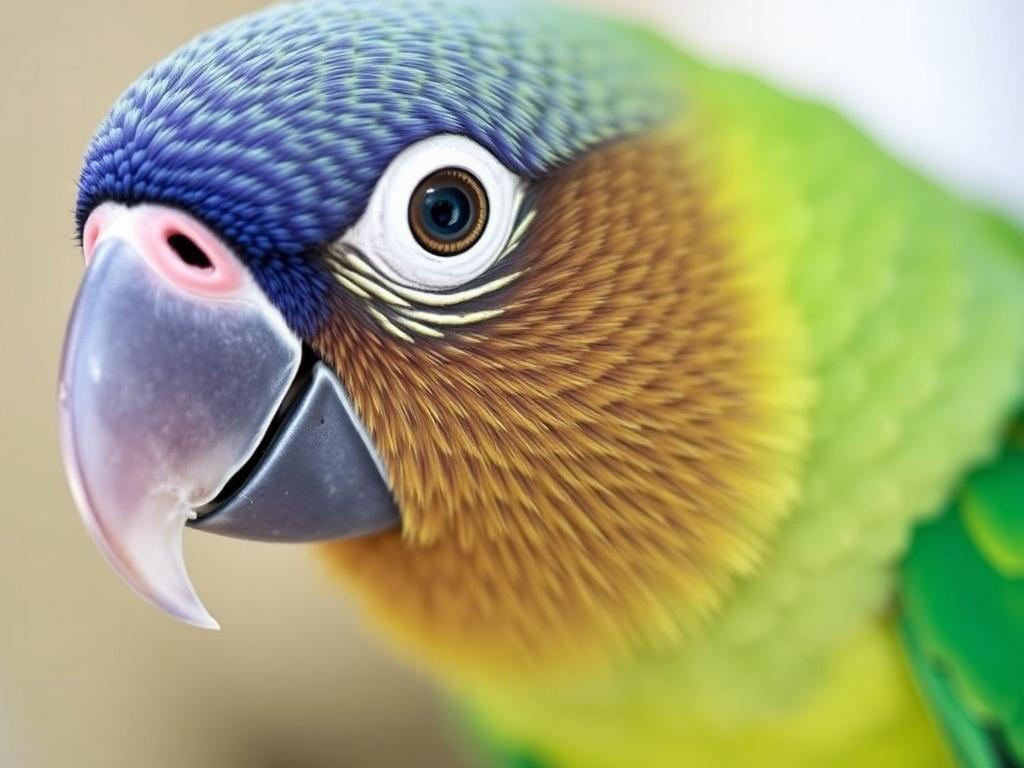
Walk through your home from a bird’s-eye perspective. Use this checklist regularly and especially after guests visit or when you bring new items into the house.
- Are non-stick cookware and ovens used in the kitchen? Consider switching or use with extreme caution.
- Are any windows open when the bird is out? Install secure screens and keep doors closed.
- Are cleaning products and aerosols stored out of reach? Use bird-safe options.
- Are houseplants checked for toxicity? Remove or relocate hazardous plants.
- Are metal items in the bird’s environment bird-safe (stainless, nickel-plated)?
- Are candles, incense, essential oil diffusers, and air fresheners kept away from birds?
- Are other pets supervised and kept away from bird play areas?
- Are small objects, rubber bands, and jewelry kept off tables and counters where a bird can access them?
Training and enrichment to reduce risk
Parrots are smart and need stimulation. Lack of mental activity can lead them to investigate forbidden items out of boredom. By providing appropriate outlets, you reduce the likelihood that they’ll chew hazardous things.
Safe toys and chewing options
Offer a rotation of chewable, bird-safe toys made of untreated wood, leather, or specific bird-safe materials. Puzzle feeders and foraging toys can keep them busy and mentally stimulated.
Training to target and step-up
Teach basic commands so you can guide your bird away from hazards quickly. Training also strengthens your bond, making it easier to manage risky situations calmly.
Supervised exploration time
Designate a bird-safe room or area for out-of-cage time. Supervise closely and ensure all hazards have been removed before the bird is allowed to explore.
When to consult your avian vet
Regular veterinary care can catch issues before they become emergencies. Schedule annual check-ups and consult your vet promptly if you see any of the following:
- Sudden changes in appetite or droppings
- Unexplained weight loss
- Respiratory distress, sneezing, or wheezing
- Neurological signs: tremors, head tilts, seizures
- Behavioral changes: increased aggression, lethargy
- Any suspected exposure to toxic foods, fumes, or metals
Keeping emergency information handy
Post your avian vet’s number and the nearest emergency clinic where you can see them 24/7. Consider adding the ASPCA Animal Poison Control (or equivalent in your country) and any local poison hotlines to your contacts. Time is crucial in poisoning cases.
Case stories and lessons learned
Real-life examples help bring abstract risks into focus. I’ll summarize a few anonymized scenarios that highlight common mistakes and practical fixes.
The avocado bite
A cockatiel pecked at a crumb of avocado that fell from a guest’s plate. Within hours the bird showed labored breathing and collapsed. Quick transport to the vet and supportive care helped this bird recover, but the family learned to clear dining areas and never allow food sharing.
The Teflon tragedy
A household using a non-stick pan for sautéing at high heat lost a tiel overnight — fumes migrated from the kitchen into adjacent rooms. The key takeaway was the silent danger of overheated polymers and the importance of avoiding non-stick pans entirely.
The mystery of lead
A conure became increasingly lethargic over weeks. Tests revealed lead poisoning from an old curtain weight that the bird had chewed. Replacing all suspect metal items and switching to stainless hardware solved the risk, and chelation therapy helped the bird recover.
Resources and further reading
Knowledge builds confidence. Here are some recommended resources and topics to explore:
- Avian veterinary clinics and emergency centers
- Books and guides on parrot nutrition and home safety
- Websites of reputable bird welfare organizations
- Academic articles on avian toxicology (for in-depth learning)
Final practical checklist for new parrot owners
Before bringing a parrot home or during your first week with a new bird, run through this quick checklist:
- Remove all toxic foods from counters and tables — no sharing meals.
- Replace non-stick cookware or use it only with extreme caution and ventilation.
- Lock away cleaning products, pesticides, and medications.
- Inspect perches, toys, and cage hardware for unsafe metals or coatings.
- Create a bird-safe room for supervised out-of-cage time.
- Set up a diet plan with your avian vet (pellets + fresh produce).
- Post emergency numbers and vet info near your phone.
Conclusion
Keeping parrots safe means thinking like a bird: curious, explorative, and constantly pecking at the world. Many everyday foods and household items pose real risks — from chocolate, avocado, and caffeine to non-stick fumes, heavy metals, and strong chemicals — but the good news is that most hazards are easy to prevent with awareness and a few steady habits. Build a safe environment by choosing bird-appropriate foods, removing or replacing risky items, supervising out-of-cage time, and keeping emergency contacts handy. With thoughtful preparation and regular veterinary care, you can enjoy a long, healthy, and happy life with your feathered friend, full of playful moments and peace of mind.


